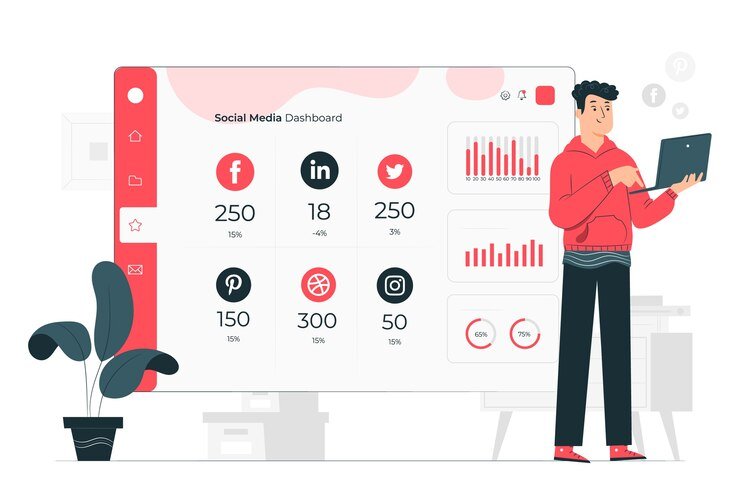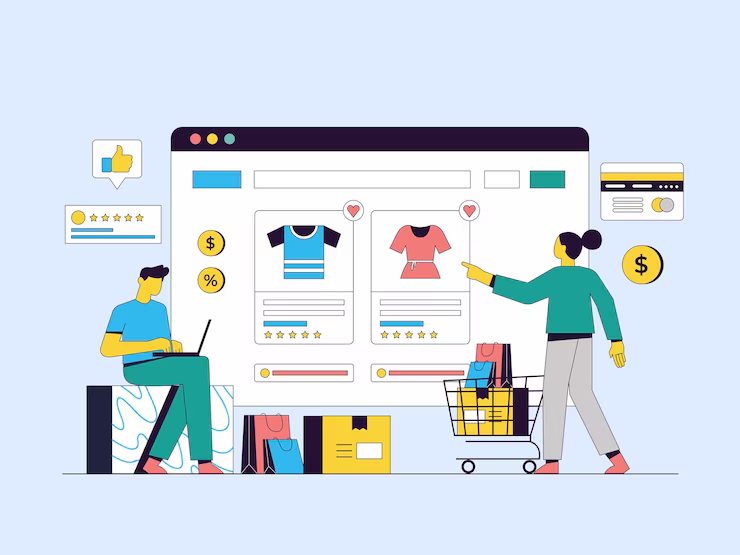Introduction
In today’s digital-first world, social media marketing tips for E-commerce business. Whether you’re a small boutique or a global retailer, leveraging social platforms can supercharge your brand’s visibility, engagement, and sales. But with countless strategies out there, what really works?
In this guide, we’ll walk you through 10 proven social media marketing tips for e-commerce success. These insights will help you connect with your audience, drive sales, and build a loyal customer base.
1. Choose the Right Social Media Platforms

Not all social media platforms are created equal. Your first step should be identifying where your target audience spends most of their time. Here’s a quick breakdown:
- Instagram & TikTok: Ideal for visual content, lifestyle brands, and younger demographics.
- Facebook: Great for community building, advertising, and older audiences.
- Pinterest: Perfect for fashion, home decor, and DIY brands.
- LinkedIn: Best for B2B e-commerce or high-end professional products.
- Twitter & Reddit: Useful for brand awareness, customer engagement, and trending discussions.
Pro Tip: Focus on 2-3 platforms that align with your brand instead of spreading yourself too thin.
2. Create High-Quality and Engaging Content
Content is king, and in e-commerce, visually appealing content reigns supreme. You need a mix of content types to keep your audience engaged:
- Product Photos & Videos: Showcase your products in action.
- User-Generated Content (UGC): Encourage customers to share their experiences.
- Behind-the-Scenes Content: Build a brand story and authenticity.
- Educational Content: Share tips, how-tos, or industry insights.
Pro Tip: Invest in high-resolution images and videos that align with your brand aesthetics.
3. Optimize Your Social Media Profiles
Your social media profile is like a storefront—first impressions matter. Ensure your bio, profile picture, and links are optimized:
- Use a clear, professional profile picture (brand logo).
- Write a compelling bio with keywords.
- Add a trackable link (e.g., Linktree) to guide users to your shop.
- Use consistent branding across all platforms.
Pro Tip: Update your bio with seasonal offers or product launches.
4. Leverage Influencer Marketing & Partnerships
Collaborating with influencers can significantly boost brand awareness and sales. When choosing influencers:
- Focus on micro-influencers (10k-100k followers) for better engagement.
- Look for influencers whose audience aligns with your target market.
- Offer discount codes or affiliate partnerships to track ROI.
Pro Tip: UGC from influencers builds trust and credibility among potential buyers.
5. Run Targeted Social Media Ads
Organic reach is declining, making paid social media ads essential. Platforms like Facebook, Instagram, and TikTok offer advanced targeting options, including:
- Lookalike Audiences: Target people similar to your existing customers.
- Retargeting Ads: Convert warm leads who visited your store but didn’t buy.
- Carousel & Video Ads: Engage users with interactive ad formats.
Pro Tip: Always A/B test your ads to improve performance and lower ad costs.
6. Use Social Commerce Features
Social platforms are evolving into shopping hubs. Take advantage of features like:

- Instagram & Facebook Shops For E-Commerce: Sell directly from your profile.
- Pinterest Product Pins: Drive traffic with visually appealing pins.
- TikTok Shopping: Connect your e-commerce store for seamless purchases.
Pro Tip: Optimize product descriptions and use shoppable tags to make buying effortless.
7. Engage with Your Audience Consistently
Social media isn’t just a sales tool—it’s a two-way communication channel. To build trust and engagement:
- Respond to comments and messages quickly.
- Encourage conversations through polls and Q&A sessions.
- Feature customer testimonials and stories.
Pro Tip: Use automation tools like chatbots but keep your responses personalized.
8. Leverage Viral Trends and Hashtags
Staying relevant means hopping on trending topics and challenges. Here’s how:
- Follow industry trends on TikTok and Twitter.
- Use relevant hashtags (#Ecommerce, #ShopNow, etc.).
- Create brand-related challenges or viral-worthy content.
Pro Tip: Don’t force trends—only participate if they align with your brand.
9. Monitor Analytics and Adjust Strategies
What gets measured gets improved. Track your social media performance using:
- Facebook & Instagram Insights (engagement, reach, conversions).
- Google Analytics (track traffic from social media).
- Third-Party Tools (Hootsuite, Buffer, Sprout Social).
Pro Tip: Double down on what works and tweak underperforming strategies.
10. Offer Exclusive Social Media Promotions
Give your followers a reason to stay engaged by offering:
- Exclusive discounts for social media followers.
- Limited-time giveaways and contests.
- Flash sales announced only on social media.
Pro Tip: Use scarcity and urgency (e.g., “Only 24 hours left!”) to drive more sales.
Final Thoughts
Social media marketing for e-commerce isn’t about random posts and promotions—it’s about strategy, consistency, and engagement. By following these 10 tips, you can build a strong online presence, attract loyal customers, and drive more sales.
Start implementing these strategies today and watch your e-commerce brand thrive in the digital world!
